Alexandros Palaios
Online Learning for Autonomous Management of Intent-based 6G Networks
Jul 25, 2024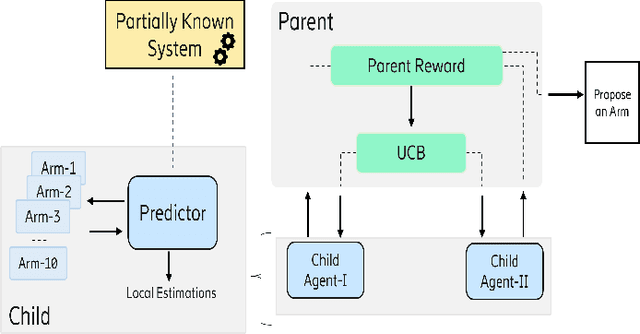



Abstract:The growing complexity of networks and the variety of future scenarios with diverse and often stringent performance requirements call for a higher level of automation. Intent-based management emerges as a solution to attain high level of automation, enabling human operators to solely communicate with the network through high-level intents. The intents consist of the targets in the form of expectations (i.e., latency expectation) from a service and based on the expectations the required network configurations should be done accordingly. It is almost inevitable that when a network action is taken to fulfill one intent, it can cause negative impacts on the performance of another intent, which results in a conflict. In this paper, we aim to address the conflict issue and autonomous management of intent-based networking, and propose an online learning method based on the hierarchical multi-armed bandits approach for an effective management. Thanks to this hierarchical structure, it performs an efficient exploration and exploitation of network configurations with respect to the dynamic network conditions. We show that our algorithm is an effective approach regarding resource allocation and satisfaction of intent expectations.
QoS prediction in radio vehicular environments via prior user information
Feb 27, 2024Abstract:Reliable wireless communications play an important role in the automotive industry as it helps to enhance current use cases and enable new ones such as connected autonomous driving, platooning, cooperative maneuvering, teleoperated driving, and smart navigation. These and other use cases often rely on specific quality of service (QoS) levels for communication. Recently, the area of predictive quality of service (QoS) has received a great deal of attention as a key enabler to forecast communication quality well enough in advance. However, predicting QoS in a reliable manner is a notoriously difficult task. In this paper, we evaluate ML tree-ensemble methods to predict QoS in the range of minutes with data collected from a cellular test network. We discuss radio environment characteristics and we showcase how these can be used to improve ML performance and further support the uptake of ML in commercial networks. Specifically, we use the correlations of the measurements coming from the radio environment by including information of prior vehicles to enhance the prediction of the target vehicles. Moreover, we are extending prior art by showing how longer prediction horizons can be supported.
The Story of QoS Prediction in Vehicular Communication: From Radio Environment Statistics to Network-Access Throughput Prediction
Feb 23, 2023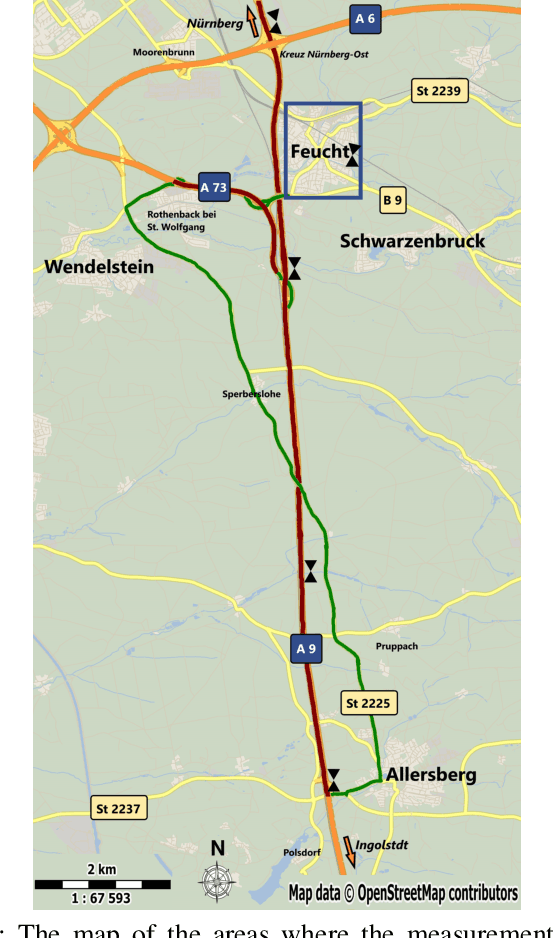
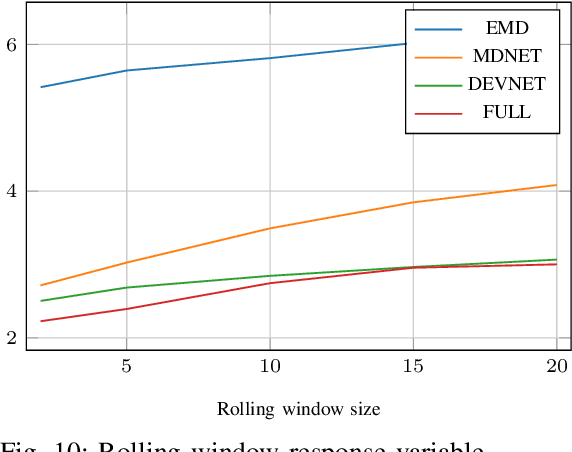
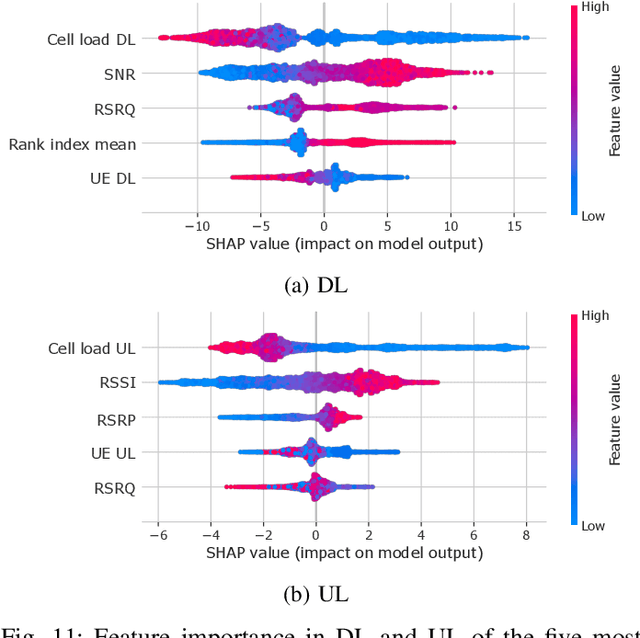
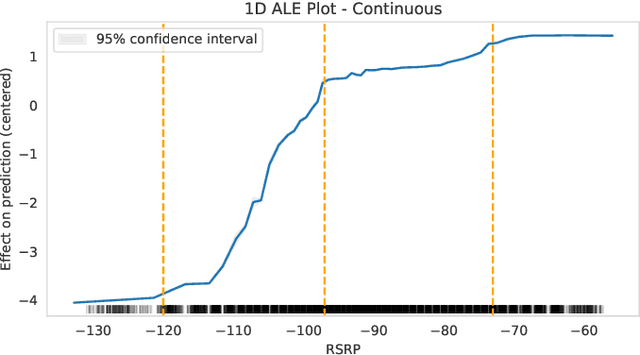
Abstract:As cellular networks evolve towards the 6th Generation (6G), Machine Learning (ML) is seen as a key enabling technology to improve the capabilities of the network. ML provides a methodology for predictive systems, which, in turn, can make networks become proactive. This proactive behavior of the network can be leveraged to sustain, for example, a specific Quality of Service (QoS) requirement. With predictive Quality of Service (pQoS), a wide variety of new use cases, both safety- and entertainment-related, are emerging, especially in the automotive sector. Therefore, in this work, we consider maximum throughput prediction enhancing, for example, streaming or HD mapping applications. We discuss the entire ML workflow highlighting less regarded aspects such as the detailed sampling procedures, the in-depth analysis of the dataset characteristics, the effects of splits in the provided results, and the data availability. Reliable ML models need to face a lot of challenges during their lifecycle. We highlight how confidence can be built on ML technologies by better understanding the underlying characteristics of the collected data. We discuss feature engineering and the effects of different splits for the training processes, showcasing that random splits might overestimate performance by more than twofold. Moreover, we investigate diverse sets of input features, where network information proved to be most effective, cutting the error by half. Part of our contribution is the validation of multiple ML models within diverse scenarios. We also use Explainable AI (XAI) to show that ML can learn underlying principles of wireless networks without being explicitly programmed. Our data is collected from a deployed network that was under full control of the measurement team and covered different vehicular scenarios and radio environments.
Towards an AI-enabled Connected Industry: AGV Communication and Sensor Measurement Datasets
Jan 10, 2023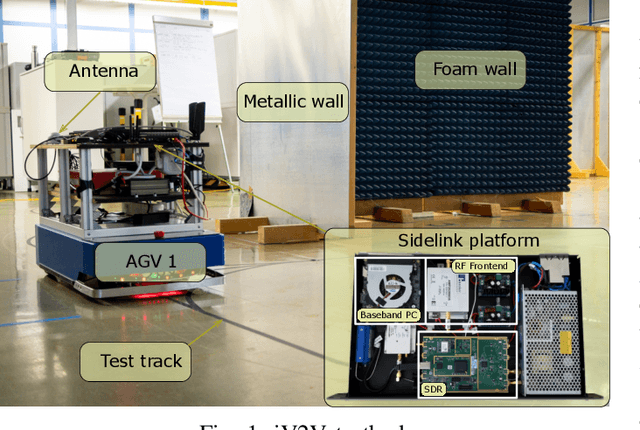
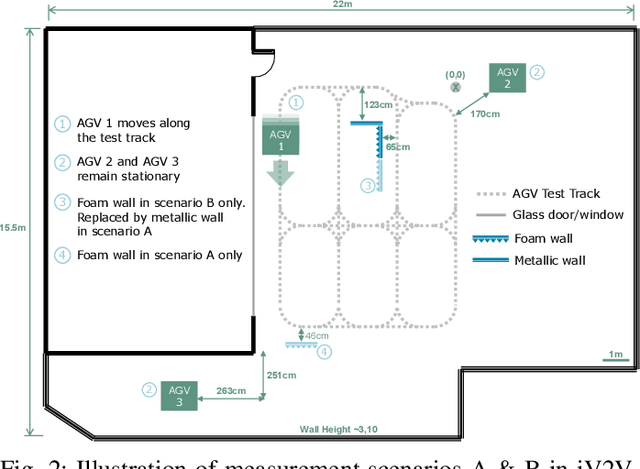
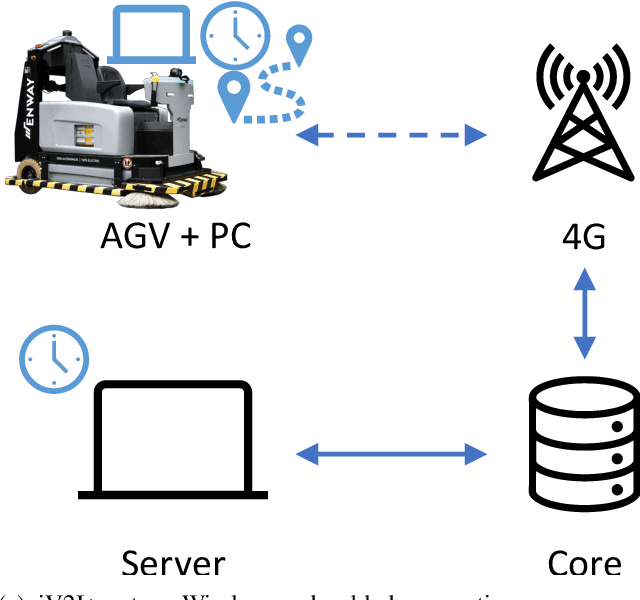
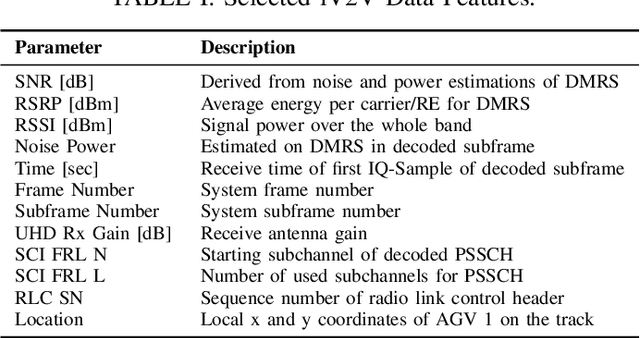
Abstract:This paper presents two wireless measurement campaigns in industrial testbeds: industrial Vehicle-to-vehicle (iV2V) and industrial Vehicle-to-infrastructure plus Sensor (iV2I+). Detailed information about the two captured datasets is provided as well. iV2V covers sidelink communication scenarios between Automated Guided Vehicles (AGVs), while iV2I+ is conducted at an industrial setting where an autonomous cleaning robot is connected to a private cellular network. The combination of different communication technologies, together with a common measurement methodology, provides insights that can be exploited by Machine Learning (ML) for tasks such as fingerprinting, line-of-sight detection, prediction of quality of service or link selection. Moreover, the datasets are labelled and pre-filtered for fast on-boarding and applicability. The corresponding testbeds and measurements are also presented in detail for both datasets.
Berlin V2X: A Machine Learning Dataset from Multiple Vehicles and Radio Access Technologies
Dec 21, 2022Abstract:The evolution of wireless communications into 6G and beyond is expected to rely on new machine learning (ML)-based capabilities. These can enable proactive decisions and actions from wireless-network components to sustain quality-of-service (QoS) and user experience. Moreover, new use cases in the area of vehicular and industrial communications will emerge. Specifically in the area of vehicle communication, vehicle-to-everything (V2X) schemes will benefit strongly from such advances. With this in mind, we have conducted a detailed measurement campaign with the purpose of enabling a plethora of diverse ML-based studies. The resulting datasets offer GPS-located wireless measurements across diverse urban environments for both cellular (with two different operators) and sidelink radio access technologies, thus enabling a variety of different studies towards V2X. The datasets are labeled and sampled with a high time resolution. Furthermore, we make the data publicly available with all the necessary information to support the on-boarding of new researchers. We provide an initial analysis of the data showing some of the challenges that ML needs to overcome and the features that ML can leverage, as well as some hints at potential research studies.
 Add to Chrome
Add to Chrome Add to Firefox
Add to Firefox Add to Edge
Add to Edge